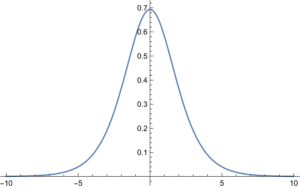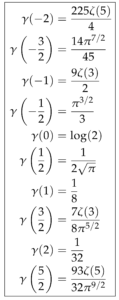This is to announce a series of lectures delivered by Ali Chamseddine (American University of Beirut, Lebanon), who is visiting Radboud University Nijmegen this Spring as a Radboud Excellence Professor. All talks will take place in the Huygensgebouw (Science Faculty) of Radboud University Nijmegen.
The first lecture (on March 26, 2019, 15:30-16:30, HG00.622) will be intended for a broad audience (with some background/interest in physics), and will be on the noncommutative geometry underlying the Standard Model of Particle Physics. Afterwards there will be a reception.
In the second and third lecture (on April 2 and 9, 2019, 15:30-16:30 in HG00.622 and HG00.108, resp.) the formalism will be further laid out; these lectures will be more specialized. Below you find more detailed titles and abstracts.
The titles of the three lectures are:
1- Noncommutative Geometry and Particle Physics: Introduction (March 26, 2019, 15:30-16:30 in HG00.622, drinks afterwards)
2- Noncommutative Geometry and Particle Physics: Unification (April 2, 2019, 15:30-16:30 in HG00.622)
3- Mimetic Gravity and Dark Matter (April 9, 2019, 15:30-16:30 in HG00.108)
Abstract (Lecture 1)
The fundamental particles and their interactions are well represented by the the Standard Model of
Particle Physics and Einstein gravity. It is not known or understood the reasons why nature made this
choice for the particles and their representations. In this lecture, following down to top approach, I will
show that noncommutative geometry, as defined by Alain Connes, is the underlying geometry of space-time
and provides the answer to “Why the Standard Model”.
Abstract (Lecture 2)
Addressing the mathematical question of characterizing four-dimensional spin manifolds leads to a
relation similar to Heisenberg noncommutativity of coordinates and momenta in Quantum Mechanics.
I show that this relation implies the quantization of the volume of space-time and leads uniquely to
identify the underlying geometry, which turns out to be noncommutative. The resulting dynamical theory
unifies all interactions including gravity with the Standard Model the effective symmetry at low energies.
Abstract (Lecture 3)
Over the years many attempts were made to isolate the scale factor in General Relativity (known as
the dilaton) but these, however, proved not to be useful. A novel idea is presented where the scale
factor is isolated in a covariant way where it will be traded for a scalar field representing the time coordinate.
I will show that this innocent looking modification has drastic consequences on cosmology. In particular, geometric
invariants of the scalar field now mimic dark matter without the need for new interactions. These can also provide
mechanisms to avoid singularities for Friedman and Kasner cosmologies, as well as black hole singularities of
Schwarzschild like metrics.


